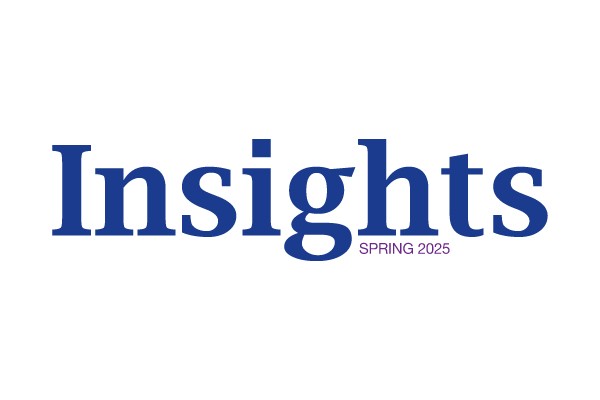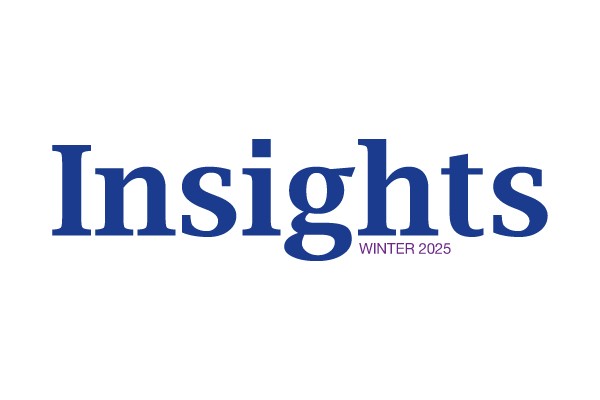Market Update – April 2025
Plus, watch a special video message from President and CEO, Peter Van Meerbergen.
The first quarter of 2025 continued the trend of resilience in the Canadian economy, with modest Gross Domestic Product (GDP) growth of approximately 1.5%. The Bank of Canada (BoC) followed through with further rate cuts in an effort to support economic expansion, bringing its benchmark interest rate down to 2.75% by the end of March. While these reductions have provided relief to interest-sensitive sectors such as housing and consumer spending, headwinds remain, particularly in the form of high household debt levels and persistent global uncertainties. Looking ahead, the BoC is expected to proceed with an additional 2-3 rate cuts through 2025, though the pace will depend on inflation trends and global economic developments. The next rate announcement on April 16th will provide further clarity on the BoC’s policy direction.
Economic Landscape
The Canadian economy has remained stable, benefiting from strong immigration-driven population growth, increased investments in technology and clean energy, and recovering corporate earnings. Recent adjustments to immigration policies, including a temporary reduction in new permanent resident targets and stricter requirements for work permits, may moderate the pace of labour force expansion. While this could help alleviate pressure on housing demand and public services, it may also present challenges for industries that rely heavily on skilled foreign workers. However, in the long term, continued immigration remains a key driver of economic growth, supporting labour market flexibility and consumption. Nonetheless, challenges such as productivity constraints, shifting trade dynamics, and geopolitical risks continue to shape the outlook.
In the U.S., economic growth has been bolstered by ongoing consumer spending and business investment, prompting the U.S. Federal Reserve to take a more measured approach to rate cuts. However, the recent announcement of broad-based U.S. tariffs has cast uncertainty over future growth, as these measures could lead to higher costs for businesses and consumers while dampening global trade flows. The European and Asian markets have also been impacted, with heightened trade risks prompting shifts in supply chains and investor sentiment. In Canada, while the economy has largely been shielded from the most severe tariff measures, the broader global economic slowdown and shifting trade relationships could have longer-term implications for export-driven sectors and overall Canadian GDP growth.
Market Performance
The first quarter of 2025 saw sustained growth in equity markets, fueled by strong corporate earnings and lower interest rates. However, as the quarter ended, volatility surged following the U.S. tariff announcements, leading to a decline in global trade-sensitive sectors. While the Toronto Stock Exchange (TSX) Composite Index experienced some fluctuations, it remains well-positioned for long-term growth, supported by solid economic fundamentals and easing monetary policy. Despite pullbacks in the S&P 500 and NASDAQ later in the quarter, these market corrections have created opportunities for investors to enter at more attractive price points. Meanwhile, European and Asian indices are adjusting to new trade dynamics, with potential for recovery as global supply chains adapt and businesses adjust to shifting trade conditions. For many retail investors holding portfolios resembling a balanced approach (well-diversified across equities, bonds, and other asset classes), the impact was relatively contained, with some even achieving positive returns amidst the broader volatility, highlighting the resilience of diversified strategies in turbulent times.
Impact of Recent U.S. Tariffs
On April 2nd, the U.S. administration announced aggressive new tariffs, including a 10% baseline tariff on all imports into the U.S., a 25% tariff on foreign-made vehicles, and additional case-by-case “reciprocal” duties on approximately 60 nations with significant trade imbalances. Notably, Canada and Mexico were largely exempt, with USMCA-compliant goods avoiding the new tariffs. However, Canadian industries reliant on steel, aluminum, autos, and lumber will still face a 25% tariff, while energy products will be subject to a 10% levy.
The financial markets responded quickly to the U.S. tariff announcements by adopting a risk-off stance, with equities, especially those in trade-sensitive sectors like manufacturing and technology, experiencing declines. For retail investors, this market pullback created some anxiety, particularly for those holding positions in these affected sectors. In response, many turned to safer assets such as government bonds and gold, which are traditionally seen as safer during times of heightened economic uncertainty. Bonds saw an increase in demand, pushing their prices up and yields down, while gold prices surged as investors looked for ways to protect their capital from potential inflation and market volatility driven by the tariffs.
Additionally, the U.S. dollar fell sharply due to concerns that the tariffs could slow economic growth, while the Canadian dollar and Mexican peso strengthened as both countries were spared from the worst of the new trade measures. For Canadian retail investors, this provided a slight cushion against the broader market volatility, as a stronger Canadian dollar helped to offset some of the losses in the equity markets. Commodity prices, particularly oil and industrial metals, fell as fears of a slowdown in global demand took hold, but for retail investors with diversified portfolios, gains in gold and bonds helped to balance out the losses in these sectors, mitigating some of the risks posed by the tariff-driven market turbulence.
Macroeconomic Implications: Stagflationary Risks?
The combination of tariffs and global economic uncertainty has created a stagflationary risk in the U.S., where inflation is expected to stay elevated while economic growth slows. Tariffs increase the cost of goods, which in turn puts upward pressure on prices, particularly for imports. At the same time, the broader economic slowdown could dampen consumer spending and business investment, leading to a stunted recovery. For Canadian consumers and investors, this could have indirect effects, as any slowdowns in the U.S. economy could reduce demand for Canadian exports, particularly in sectors like energy, manufacturing, and natural resources. As the U.S. economy navigates these headwinds, inflationary pressures might force the U.S. Federal Reserve to carefully balance its policy decisions to avoid deepening the downturn while still controlling inflation.
For Canada, while the direct impact of tariffs may be less severe, the potential slowdown in global trade could still affect Canadian industries reliant on international markets. The Bank of Canada is expected to remain cautious in its approach, with many traders pricing in 2-3 rate cuts in 2025 to support domestic economic activity. Lower interest rates could offer relief to consumer spending and the housing market, but any potential global disruptions stemming from tariffs or geopolitical risks may limit the effectiveness of such measures. As the U.S. Federal Reserve faces its own challenges with inflation, the Bank of Canada may be limited in its ability to act aggressively, resulting in a delicate balancing act to ensure economic stability amid a turbulent global environment.
Looking Ahead
The outlook for the remainder of 2025 remains cautiously optimistic. With interest rates expected to continue declining, consumer spending and residential investment should provide support for economic growth. However, geopolitical risks, trade uncertainties, and the Canadian federal election scheduled for April 28,2025 could introduce periods of volatility.
For investors, the importance of maintaining a well-diversified portfolio remains paramount. By working with your financial planner/advisor, you can ensure that your investments are strategically positioned to navigate the evolving economic landscape.
As always, we encourage you to reach out to your financial advisor for personalized insights and to discuss any adjustments to your investment strategy in light of these developments.


